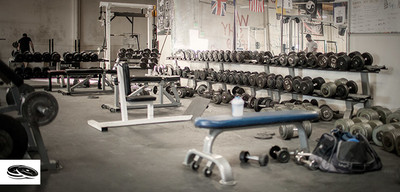I grew up with a love for bodybuilding, mostly because I spent much of my childhood in a dirty, stinky, dungeon-ish hardcore gym in Virginia. My mother, Faith Bevan, trained there when she was a competitive bodybuilder in the early 1980s. I would watch as she lifted alongside Washington Redskins players, WWF wrestlers like the Ultimate Warrior, and lots of pro bodybuilders. I used to tell the other kids at my elementary school, "My mom could beat up your dad."
With that kind of history, it was natural that I made working with bodybuilders and physique athletes a point of emphasis when I later became a trainer. I also developed an eye for what made hypertrophy training unique and different from, say, powerlifting, or training football players and other athletes.
Unfortunately, I've seen countless bodybuilders in the ensuing years who don't seem to understand where their training style begins and other styles end.
I've already gone over some of the common errors I see bodybuilders making, but now I want to talk about something more specific: confusing training for size with and training for strength. Now, of course the two aren't mutually exclusive. If you train for size, you will get stronger.
That said, I'm not writing this article for athletes looking to improve their "go." The tips here are intended to help experienced lifters improve their "show," either on the stage or at the beach.
Now that we're on the same page, let's get serious about building muscle.
The Size-Strength Continuum
In simple terms, strength is about increasing force production. Size, on the other hand, is about getting a pump and creating microscopic damage to the muscle, which then causes it to repair and grow larger. This is hypertrophy in a nutshell.
The general rule of thumb when training for strength is that the reps should be low and the resistance load should be high. Also, true low-rep strength work is primarily neuromuscular. If you think of your body as a computer, strength training is more about upgrading your software, which is your central nervous system (CNS), than it is about the hardware—your muscles. Strength training is about teaching your CNS how to bring more muscle into the game; or to increase motor unit recruitment.
Unlike strength training, the goal of training for size is more physiological than it is neurological. It's about upgrading your body's hardware, like bones, connective tissues, and muscles. You literally build your body, forcing the tissues to develop and grow stronger.
The Well-Rounded Rep Scheme
After what I just said, this may come as a surprise, but I believe that there is a place for some low-rep power work in a well-rounded bodybuilding program.
Physique athletes, like any other type of athlete, can benefit from increased motor unit recruitment, so I put some low-rep/high-load work in my physique athletes' programs, to the order of 5-6 sets of 4-6 reps. That said, we spend the predominant amount of our training time in the range of 3-5 sets of 8-15 reps, which has repeatedly been shown to be more directed at stimulating structural hypertrophy.
As I said earlier, it's not like you're totally missing out on strength development by training for hypertrophy. All types of training can have neurological benefits. But your goal with our bodybuilding program is to create maximum structural change, not neurological change. So if that's your goal, don't leave mass on the table!
Heavy Matters
At any given time at any big-box gym, you'll see at least one guy doing biceps curls where he has to throw his lower back into it each time he brings the weight up. Not far away, there's the dude doing back squats so heavy, he can't go near parallel. If you don't see that dude at your gym, it may be because he's you.
It's easy to make this mistake. After all, you're in the gym to lift weights, right? Well, sort of. Bodybuilding is not about becoming a "weightlifter." It's about using weights as a tool to increase your muscle size. Throwing as much weight on the bar, whether to boost your ego and impress the people around you, uses the wrong tool for the job.
When you go too heavy, here's what happens:
- You reduce the time under tension, because you're forced to use momentum to cheat.
- You're unable to lower the weight in a slow, controlled manner, further reducing your time under tension.
- You're unable to focus on the muscles being worked because you have to struggle just to get the weight up.
- You utilize more muscles, which reduces the accumulated pump in muscles you intend to target.
Allow me to burst your bubble: No one else in your gym cares how much you lift! And if they do, then they're just making the same mistakes you are, so you shouldn't care what they think. If you're unable to manage the weight you lift for sets of at least six controlled reps, you are more closely training for increased strength—and that's if you keep good form. Otherwise, it's just bad lifting, which won't make you stronger, and might end up injuring you.
Keep It Strict!
Like any sport, bodybuilding is most effective when guided by overriding principles. If you're looking for the three-word version, here it is: time under tension.
If you want to improve muscle size, maximize your time under tension on every rep by:
- Using strict form.
- Utilizing controlled eccentric (lowering) movements of at least three seconds.
- Mentally focusing on the muscles being worked and squeezing those muscles at the peak of contraction.
- Avoiding fully locking out, so the muscles are under tension throughout the movement.
Does this mean that all cheating is off limits? Not necessarily. There are ways to cheat effectively while still using this system. But if you don't have the fundamentals down pat first, then you only cheat yourself.

